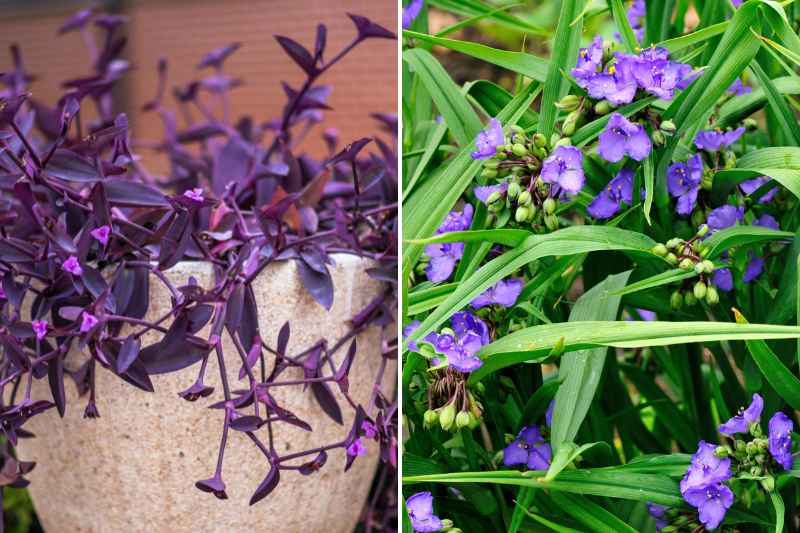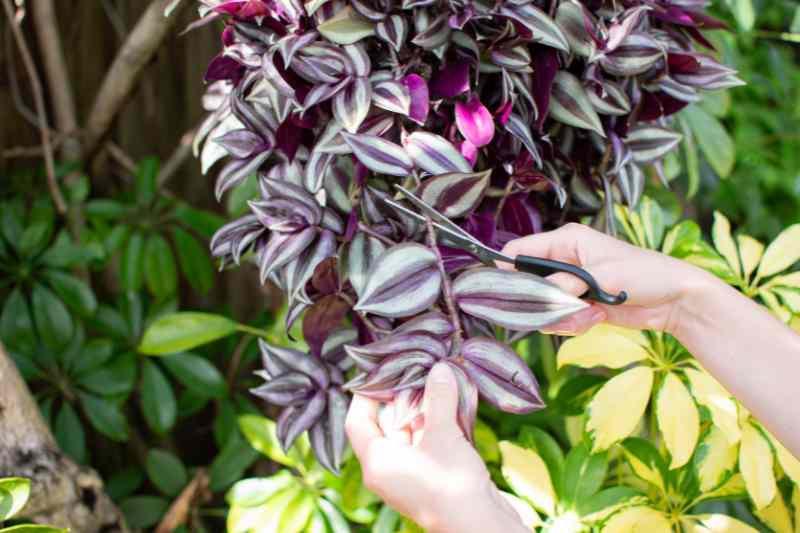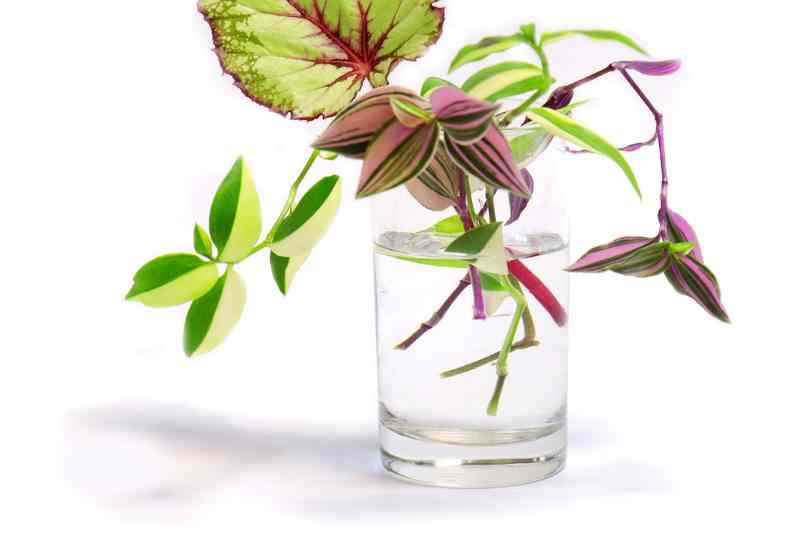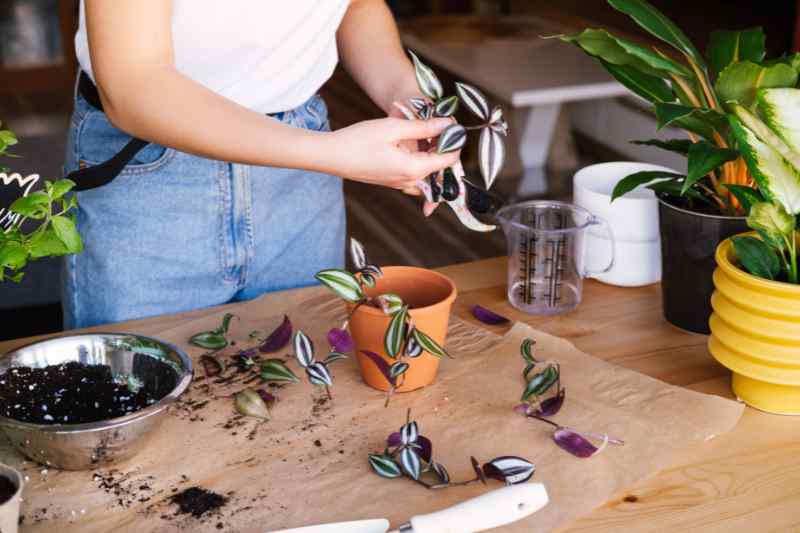Tradescantia, also known as spiderwort, encompasses several species known for their decorative foliage and ease of cultivation. Some varieties, such as Tradescantia zebrina or fluminensis, are primarily grown indoors or in pots, while others, like Tradescantia virginiana, thrive in the ground due to their hardiness. Two simple techniques allow for their propagation: propagation by cuttings for non-hardy species, and clump division, suitable for perennial species.
Continue reading to discover when and how to propagate Tradescantia!

When to propagate Tradescantia?
The ideal time depends on the method used:
- Propagation by cuttings can be done year-round indoors, but yields better results in spring and summer, when the plant is in full growth.
- Clump division, on the other hand, should be done in early spring or in autumn, during the dormant period, to encourage successful establishment.
How to propagate Tradescantia?
Depending on the variety grown (hardy perennial or houseplant), one of the two following methods will be chosen. The Tradescantia propagated in this way generally establishes very quickly.
Taking cuttings of spiderwort
Taking cuttings of Tradescantia is the simplest, quickest, and most effective method for non-hardy species. It allows for the production of a plant identical to the mother plant from a simple piece of stem. Once your Tradescantia stem is cut below a node and the lower leaves are removed, it can be propagated in water or directly in soil.

Propagating spiderwort in water
Necessary materials
- Clean pruning shear
- Clear glass or transparent container
Propagating spiderwort in water is a simple, quick method that allows you to observe root formation and easily control moisture. This method is perfect for Tradescantia zebrina, fluminensis, or nanouk, often grown in suspension or in indoor pots.
- Cut cleanly below a node.
- Place the stem in a glass of clear water, submerging at least one node.
- Position the container in a bright spot, but out of direct sunlight.
- Change the water every 2 to 3 days to prevent bacterial growth.
- Roots will appear in 7 to 15 days, depending on the ambient temperature.
- When the roots are 2 to 3 cm long, you can replant the cutting in a pot filled with light substrate.

Propagation in soil
Necessary materials
- Sharp and clean pruning shears
- A well-sharpened and disinfected knife
- Perforated seedling pots at the bottom
- Some potting soil and sand
- Plant the cutting in a pot filled with light and well-drained potting soil.
- Lightly firm the soil around the stem to ensure contact with the substrate.
- Water moderately, without over-saturating.
- Place in indirect light and in a warm atmosphere (≥ 18 °C).
- Keep the soil moist in the initial days, until new shoots appear.
- Replanting should occur as soon as the roots are about 2 to 3 cm long.

Clump division of Tradescantia
Necessary materials
- A sharp spade or shovel: To dig up the clump.
- A garden knife: To cleanly divide the root ball.
- Gardening gloves
- Select a well-established clump in the garden.
- Dig up and separate the sections with roots.
- Trim any excessively long foliage if necessary.
- Replant immediately in fresh, well-drained soil.
- Water thoroughly after planting.
Care for spiderwort cuttings
A well-rooted Tradescantia displays dense foliage, regular growth, and vibrant colours. Moderate watering, appropriate exposure for the variety, and regular repotting or weeding will ensure the healthy development of propagated plants. It is essential to provide favourable conditions for their establishment. Young Tradescantia cuttings should be placed in a bright location, out of direct sunlight, at a stable temperature between 18 and 24 °C. The substrate should remain slightly moist during the first weeks, but never waterlogged, to avoid rotting the young roots. It is advisable to wait three to four weeks after planting before adding a mild fertiliser, to prevent weakening the forming roots.
For clumps divided in the ground, generous watering immediately after planting is essential. The soil should remain cool without excess moisture. A light mulch helps retain moisture and limit weeds. If division is done in spring, establishment is generally quick. In the case of division in autumn, the plant roots slowly and resumes growth the following spring.































Comments